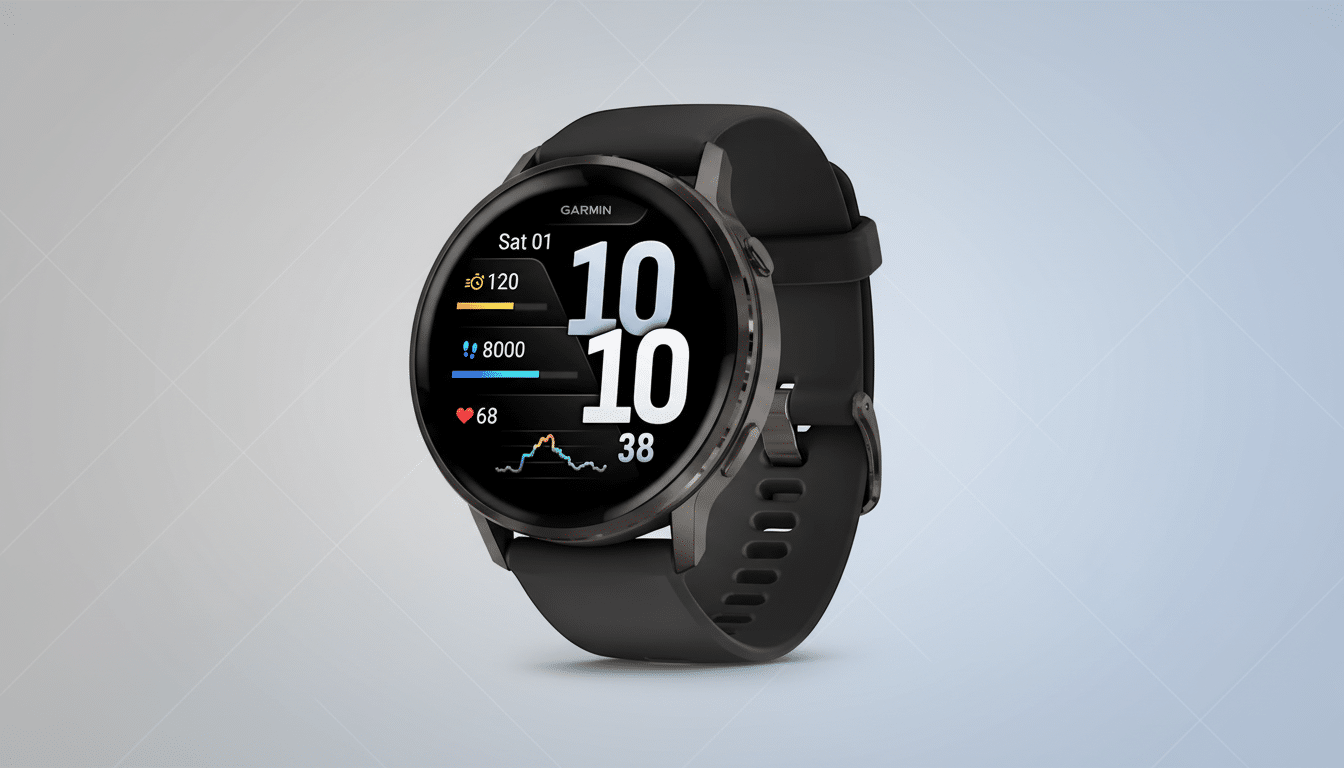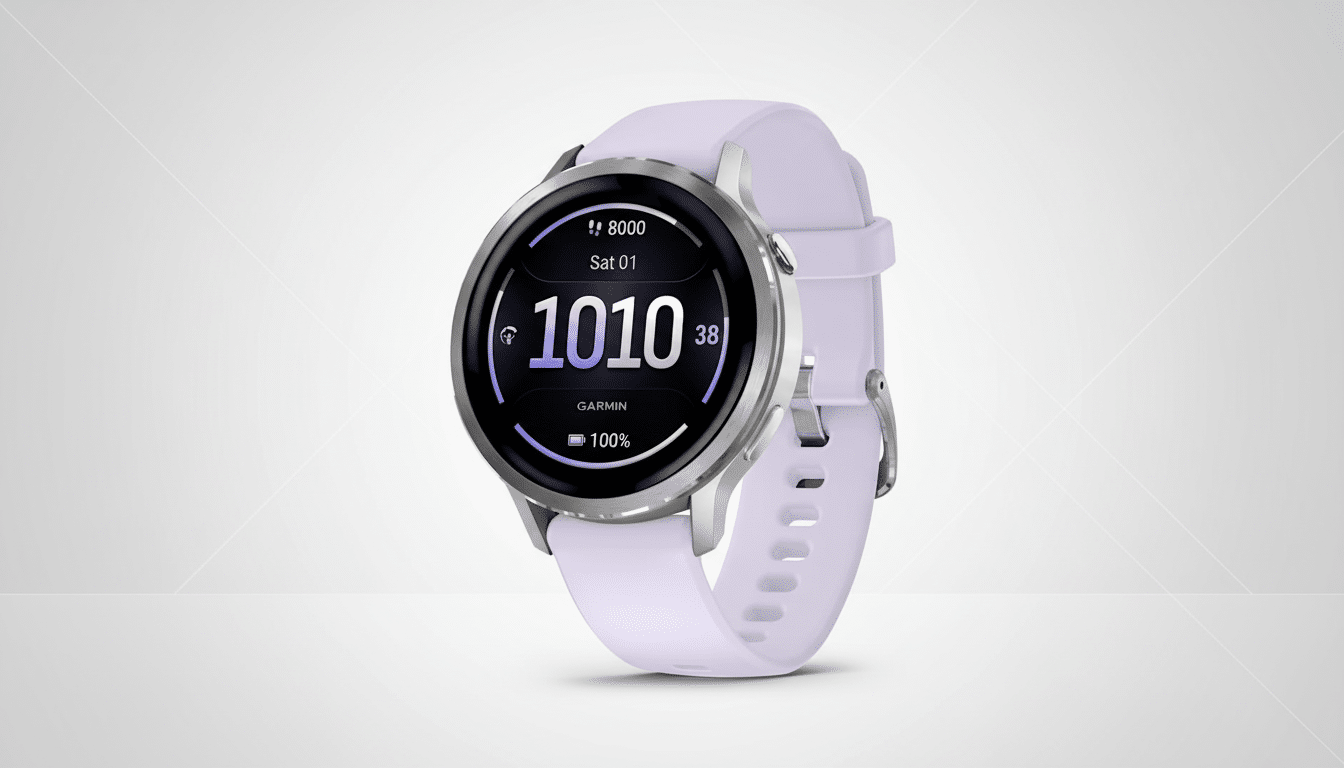If you work out hard and play hard but want a watch that’s as polished as it is performance-driven, the Garmin Venu 4 gets surprisingly close to checking all those boxes. It’s packing pro-grade training metrics and reliable sensors into the kind of sleek package that would look at home in the boardroom. Several weeks of testing across runs, rides, strength work and sleep later and it’s the most complete, athlete-first smartwatch Garmin has made to date.
At $549.99, it is not an impulse buy. But the value proposition is in how well it supports training and recovery without the bulk or button-heavy feel of traditional endurance watches. For a more serious athlete still looking for that contemporary smartwatch feel, the Venu 4 strides to the front of the pack with confidence.

Design and display built to work hard and look sharp
Garmin keeps the sizing sensible with 41mm and 45mm versions, both now housed in an all-metal body that feels premium and looks quite rugged too. The slimming to a two-button layout says this is a touchscreen-first experience, and it is: there’s rapid navigation, the UI is clean-looking and you see all those core workout controls without having to faff around too much. The AMOLED screen is bright and readable in direct sunlight and visibility on the run is superb.
A small yet surprisingly useful feature is the built-in LED flashlight. It serves as a red light for low-visibility conditions and it can strobe during night runs. It is the kind of service that you did not know you needed until you used it — and then could not find anywhere else. Comfort is on point as well, thanks to a soft silicone strap, low-profile case to slide under sleeves and weight that’s light enough to forget you’re wearing it when tracking sleep.
Training features that matter for serious workouts
The Venu 4 is powered by Garmin’s consolidated software platform, which draws heavily from its performance-oriented lines. You’re granted Training Readiness, Training Load, Heat and Altitude Acclimation and then daily suggested workouts across a variety of sports (and yes, a proper triathlon mode too). In practice that means the watch isn’t only logging activities, but proposing sessions based on previous load, sleep and recovery time, as well as explaining why. Firstbeat Analytics, the physiologic engine driving Garmin’s readiness metrics, has for a long time been hanging HRV, sleep and strain on capacity to perform, and you see this baked into every recommendation.
Accuracy is consistently strong. Multi-band GNSS locks on in tight routes underneath tree cover and through the central business district, and the Elevate v5 optical sensor has kept heart-rate readings a beat or two away from a chest strap during steady runs and short high-intensity intervals. Chest straps are the research standard in sports science, but the Venu 4’s optical data is reliable enough for pacing, zone work and post-run analysis without asterisks.
Health tips that guide without misleading you
Sleep tracking makes meaningful progress. Sleep Alignment analyzes how closely your schedule aligns with circadian timing, pushing toward a routine that supports performance. The watch’s Health Status widget gathers HRV, stress, skin temperature, respiration data, SpO₂ and sleep information so trends are straightforward to see at a glance – less time searching through menus and more time moving. Guidance follows recommendations from entities such as the National Sleep Foundation that emphasize consistent schedules for better recovery.

Lifestyle Logging enables you to input caffeine, alcohol and napping habits in order to see how your behaviors affect readiness — a tool that could come in handy when dialing in taper weeks or travel days. An on-watch ECG app can check for signs of atrial fibrillation when cleared to do so; it’s a screening, not a diagnosis, which echoes guidance from the Heart Rhythm Society. The result is a health suite that does not merely gather data; it ties the dots together in ways athletes can put to use before the next session.
Battery life and daily smarts for athletes on the go
Battery life is still a trump card for Garmin. The Venu 4 should last up to 12 days in smartwatch mode, or about four days if you enable the always-on display. With mixed use (GPS recording sessions and sleep tracking overnight), I’m getting 9–10 days. Expect around 3% for a full night of sleep tracking and roughly 5% for a 45-minute workout with AOD enabled. That’s a whole lot more battery life than the day-to-day cadence of many wearables from Apple and Google. The catch is that you’re stuck with Garmin’s proprietary charging cable, which isn’t yet USB-C.
Smart features take care of what most athletes want: on-wrist calls, access to your phone’s voice assistant, offline music from services like Spotify and Amazon Music, and Garmin Pay for contactless checkout. And new Focus Modes tailor notifications, brightness and buttons for your workouts, meetings or sleep. There’s no LTE option or full onboard maps here, and the app ecosystem is very thin compared to Wear OS or watchOS. That’s by design — the Venu 4 puts training and recovery ahead of app sprawl.
Verdict for serious athletes who want sleek performance
The Venu 4 falls into a specific sweet spot: It feels and looks like a high-end smartwatch, but trains more like a specialist. If you really need breadcrumb navigation or five-button control, or detail level so diligently measured that polish and abandon are taken into account at every turn, we think you will still prefer a dedicated performance line. But for runners, cyclists and gym rats who want elite tracking, trustworthy coaching and a design that fits everywhere from the roads to the weight room, this is the standout.
Factor in its strong sensor accuracy, intelligent sleep and readiness insights and battery that laughs in the face of multi-day use, and the Venu 4 isn’t just a step up for the series — it’s an athlete-first smartwatch to beat at this moment in time.

